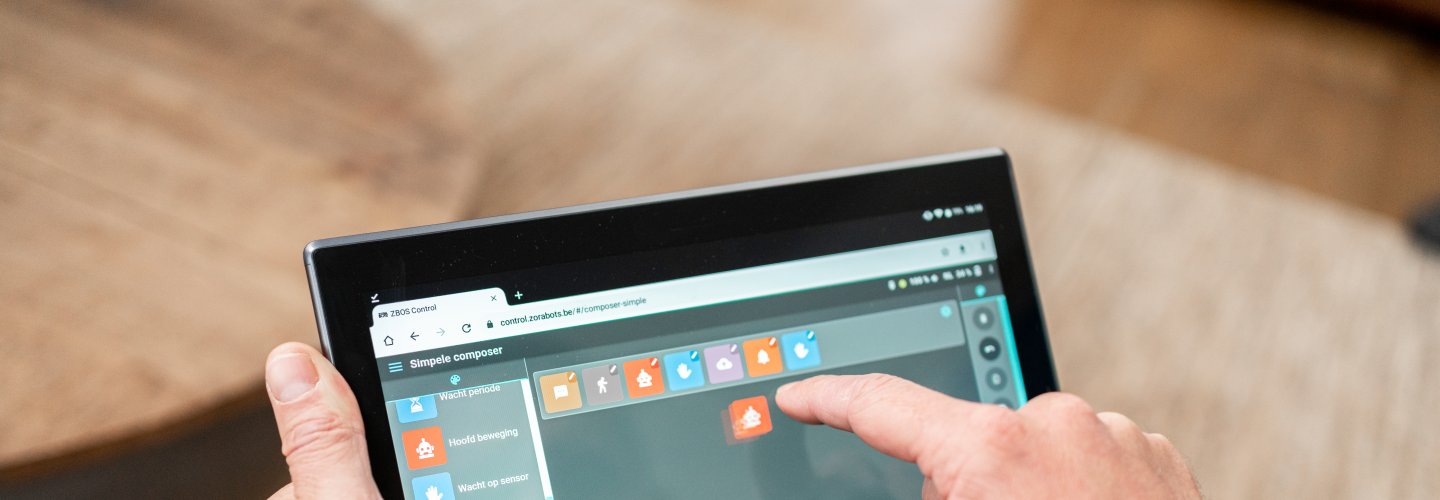
ZBOS 2.0 release announcement
We are very happy to announce the 2.0 release of our ZBOS software.
This release is based on 5 major ZBOS software component releases:
- RAIL 2.0: The core of our universal robot software
- Kiosk 2.0: The graphical launcher application on robots with a screen
- Control 2.0: The Android/iOS/browser application used for remote robot control
- Cloud 2.0: The online cloud service that unites all our technology seamlessly
- Updater 2.0: The component that keeps the robot software up to date
With these releases we are in pole position for our roadmap of 2021.
A summary of changes per release is given below:
RAIL 2.0
Introduction of 3 new API’s to facilitate control of internal and external (third party integrations) functionality:
- Application API: internal and external applications can register themselves with the RAIL
- Settings API: all internal and external settings can now be changed via our MQTT API. New settings can be added at runtime by your own applications.
- Translations API: a unified interface for registering and serving translations for internal and external applications so they communicate in the user’s locale via speech or visual display.
A new Connection API is also provided so that everything related to network connectivity is the same across all platforms (Android and Linux based robots), providing a more seamless experience to the end user.
A QR code service was added for robots with a camera, so that specific actions can be started by scanning a QR code and QR codes can be interpreted by Composer
To facilitate the onboarding of new robots, our robot discovery system was improved so that you can easily find any ZBOS robot in your local network.
Meanwhile our ZBOS robot support has been expanded with many new robots: Zora, Pepper, Robin, Aimbot, Billy-Billy and Boston Dynamics’ Spot.
Apart from the above milestone changes, many improvements and bug fixes were done to Multimedia handling, Cloud connection, Speech recognition, Camera handling, Audio, Composer, SLAM, Scheduler, Motion Detection and our MQTT API documentation.
Kiosk 2.0
The Kiosk settings menu has been re-organised into more distinct categories while the individual settings have been improved with more descriptive labels. The “advanced” settings have now been split up into their respective categories for more intuitive interaction.
Language changes can now be exposed or hidden outside of the settings menu and the distinction between speech language and interface language has been improved.
All settings embrace the new Settings and Translations API, while the WiFi screen implements the new Connection API.
Apart from these changes, many improvements and bug fixes were done to charging, robot linking, about screen, speech interaction, startup flow, volume control, video stream, pinning, Composer, website viewer and updater.
Control 2.0
A new Apps & Config screen is added which will show all Applications, Editors and Configuration on a single screen. This feature is built on top of the new Applications, Settings and Translations API, so third party applications can also be configured from this screen. The sidebar can now be customized to include the applications or actions you use the most.
A new screen is added to create WiFi configuration files and/or QR code to assist with connecting robots to your WiFi network.
The flow of adding a new robot to your account has been completely reworked. To add a robot now you can automatically find the robot in your local network. If you are the first user to add the robot, you become the robot administrator. If other users try to link to your robot, you will need to approve their link request first. A new screen is added to administer all linked users per robot.
The Composer has been expanded with a new “Wait for QR” block, while the “Wait for sensor” block and “MQTT block” have been improved significantly. Compositions can now be shared securely with anyone, anywhere, via a short link.
The Kiosk editor now has an alternative tree view display mode to assist with changing the hierarchy of deeply nested kiosk data sources.
In all cases where multimedia is used from the Cloud, the images now have thumbnails.
Last but not least, many visual changes have been implemented: a brand new logo, new icons for robots, default dark theme and a color picker to customize the interface to your preference.
As usual, many components have been improved: Performance, Monitoring, Steering, Mapping, Composer, Quick Responses, Pagination, Multimedia, Video Stream, Animations, Push messages and Editors.
Cloud 2.0
Rebuilt from the ground up with scalability, security and future expansion in mind, the new Cloud 2.0 is the backbone for all our current and future online functionality.
Our new Cloud infrastructure permits on-premise installation for use cases where privacy and security are of utmost importance.
Updater 2.0
The updater has been improved to embrace the new Settings API, added a silent update feature for robots without a screen and fixes problems with updating optional applications.